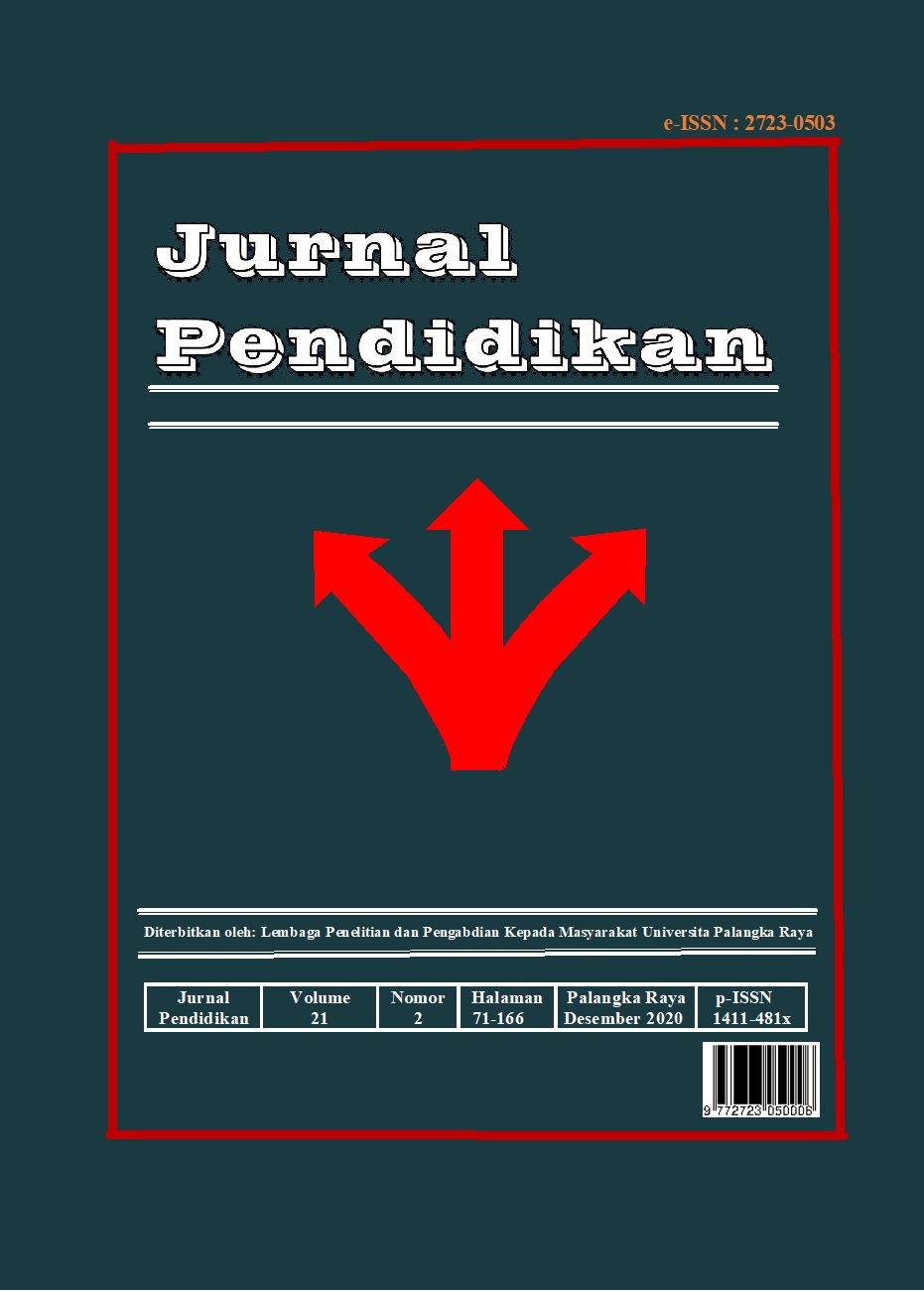Implementation Of Contrastive Analysis To Overcome The Difficulties of Learning English Pronunciation Sub-Skill
DOI:
https://doi.org/10.52850/jpn.v21i2.2017Kata Kunci:
Contrastive Analysis, Learning Difficulties, English Pronunciation Sub-SkillAbstrak
This research was conducted to investigate and understand pronunciation problems, which is the sub-skill of speaking in the first semester students of the UPR FKIP English Education Study Program through contrastive analysis. The purpose of this study was to analyze pronunciation errors in English words and the causes of the errors made by students who were the research subjects. The design used in this study to present the data is descriptive qualitative. The results of data analysis were classified into consonant errors (consonants), vowels (vowels), and vowels (diphthongs) and the causes why these errors occured.
Based on the results of data analysis, the English segmental sounds that were difficult to pronounce by students of the English Education Study Program semester I in the academic year 2020/2021 were (1) long vowels or tense vowels (i:, u:, ?:, ?:, ?:]; (2) short vowels soundor lax vowels low vowel sound [æ], and neutral vowel (schwa) [?]; (3) the sound of diphthongs (double vowels), namely rising diphthongs [??] and falling diphthongs [??], [e?], and [??]; and (4) fricative consonant sounds [f, v, z, ?, ð, ?, ?].
The causes of difficulty in learning pronunciation of English segmental sounds are (1) differences in Indonesian and English sound systems and (2) lack of knowledge of the English sound system.
Unduhan
Referensi
Pallawa, A. B. 2013. “A Comparative Analysis between English and Indonesian
Phonological Systems”. (International Journal of English Language Education, Vol.
, No. 3). Sulawesi Tengah: Universitas Tadulako.
Brown, H. D. 2007. Prinsip Pembelajaran dan Pengajaran Bahasa. (Cholis dan Pareanom,
Penerj.). USA: Pearson Education, Inc.
Carson, K. L. 2012. “Efficient and Effective Classroom Phonological Awareness Practices to
Improve Reading Achievement”. (tesis). New Zeland: College of Education,
University of Canterbury.
Celce-Murcia, M. et al. 2008. Teaching Pronunciation: A Reference for Teachers of English
to Speakers of other Languages. Cambridge: Cambridge University Press.
Elmaksoud, M. A. E. 2013. “The Effective of Using Communicative Approach on
Developing Pronunciation Sub-Skill”. Egypt: Beni-Suef University. International
Research Journal (ISSN: 2141-5161)vol. 4 (3) pp.294-308. Diunduh tanggal 5
Januari 2019 dari: interesjournals.org/ER
James, C. 1998. Contrastive Analysis. London: Longman.
Kelly, G. 2006. How to Teach Pronunciation. England: Pearson Education Limited.
Kirkpatrick, A. 2007. World Englishes. Implications for International Communication and
English Language Teaching. Cambridge: Cambridge University Press.
Kridalaksana, H. 2001. Kamus Linguistik. Edisi Ketiga. Jakarta: Penerbit PT Gramedia
Pustaka Utama.
Ladefoged, P. & Keith, J. 2011. A Course in Phonetics. Los Angeles: University of
California.
Langacker, R. 1968. Foundation of Language. Washington DC: Georgetown University
Mesthrie, R., J. Swann, A. D. &. Leap, W. L. 2005. Introducing Sociolinguistics. Edinburgh:
Edinburgh University Press.
Nesset, T. 2008. Abstract Phonology in a Concrete Model. Berlin: Walter de Gruyter GmbH.
Odden, D. 2007. Introducing Phonology. UK: Cambridge University Press.
Pike, K. L. 1963: Phonemics A Technique for Reducing Languages to Writing. Ann Arbor:
University of Michigan Press.
Richards, J. C. & Schmidt. 2008. Longman Dictionary of Language Teaching and Applied
Linguistics. UK: Longman Group.
Roach, P. 1998. English Phonetics and Phonology. New York: Cambridge University Press.
Sanga, F. 2008. Analisis Kontrastif Mengatasi Kesulitan Guru Bahasa di Provinsi NTT.
Universitas Nusa Cendana. Jurnal Linguistika Vol.15, No. 28, Maret 2008.
Sudipa, I N., Rajeg, I M. & Laksminy, L. P. 2011. Interferensi: Pengaruh Bahasa Indonesia
Dalam Bahasa Inggris. Udayana University Press.
Unduhan
Diterbitkan
Cara Mengutip
Terbitan
Bagian
Lisensi
Hak Cipta (c) 2021 Ristati, Bahing, Lesly Martha, Maida Norahmi

Artikel ini berlisensi Creative Commons Attribution-NonCommercial-NoDerivatives 4.0 International License.





